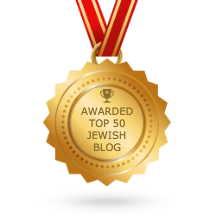354 DAYS AT A TIME – Emor – Lev.21-24, by Rabbi Baruch Cohon
You probably heard about the fellow who decided to become an atheist. He left his family’s house of worship and turned his back on religion. But then a few weeks later, he came back.
“You changed your mind? How come?”
“Atheists have no holidays.”
This week’s Torah reading outlines the Jewish calendar, which provides our annual cycle of holidays both serious and upbeat, and all sanctified by faith. Indeed, Judaism as a way of life is closely connected with the calendar. That connection goes back to our origins. Moses reminded us that we left Egypt in the spring month. Count 49 days – 7 weeks from the Exodus, and we reach Mt. Sinai to receive the Torah and become a nation. And here in Leviticus 23 we go on to detail the dates of Rosh Hashana, Yom Kippur and Succoth – New Year, Day of Atonement, and the Harvest festival, all in the fall.
So why is New Years Day celebrated on the first day of the seventh month? Precisely because Nisan, the month that includes Passover, is the month of freedom, and is specifically designated as the first month of the year in the very story of the Exodus. The Talmud (in tractate Rosh Hashana) lists four “new years days” every year: one for kings, one for numbering years, one for planting trees and one for tithes. In our urban culture, of course, we generally limit our ceremonial New Year to the 1st of Tishri. That is the day we change the number of the year.
As we all know, the Jewish calendar, like the Chinese, is based on the moon. 354 days on average, instead of the 365 of the solar calendar. That causes considerable variety in how Jewish holidays compare with those of our neighbors. In 2011, for example, Hanukkah coincided with Christmas. In 2013 it coincided with Thanksgiving. This year the 8th day of Hanukkah coincided with January 1st. And next year? Halloween maybe?
No way. Because, 7 times in every 19 years, the Jewish calendar adds a month during the spring, forming a leap year that resolves the lunar-solar difference. An ancient scholar named Shmuel who headed the academy in a Babylonian town called Nehardea was responsible for much of the development of the calendar used today. The Talmud describes him as a man who knew the orbits of the planets as well as he knew the streets of Nehardea. This self-taught astronomer laid the groundwork for a system that gives Jews the world over the opportunity to celebrate their holidays at the same time. In the days of much slower communication, they had to add a day to the holiday if they lived outside of Israel, in order to make sure they were all observing the occasion together. Hence we still have the Second Day of many festivals in traditional Diaspora communities but not in Israel. A notable exception to this rule is Rosh Hashana itself, the New Year, which is observed for two days in Israel too. It is not considered an “exile holiday” (yomtov sheyni shel goluyos) but the two days are called “one long day” (yoma arikhta). One more opportunity to hear the call of the Shofar!
With all its complex history, the Jewish calendar constitutes a sacred schedule giving us colorful special days that add meaning to all the grey weekdays of our lives.



